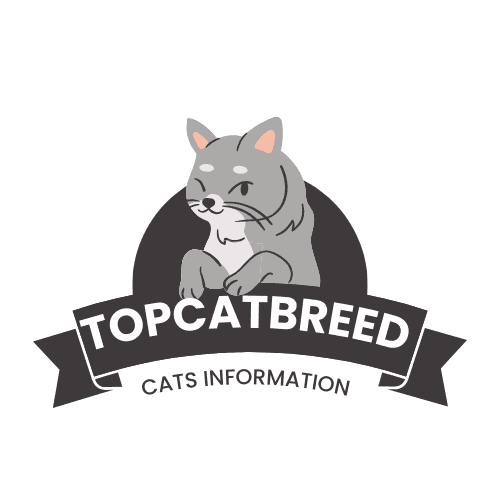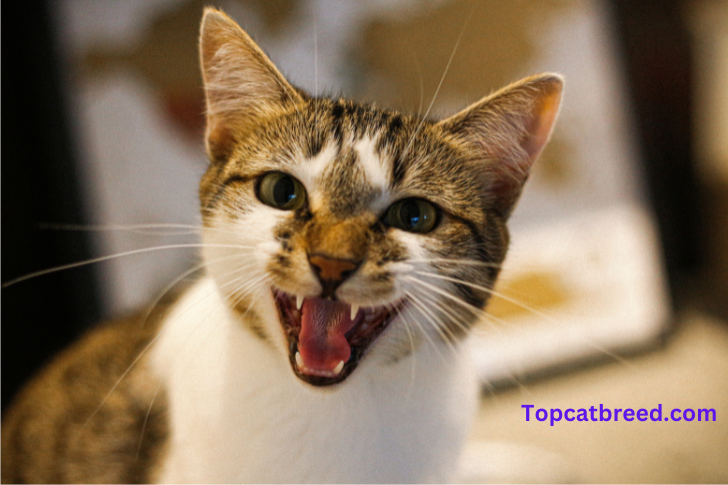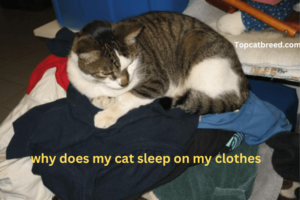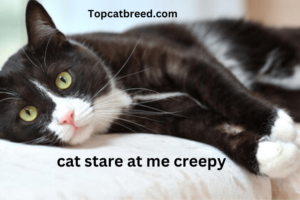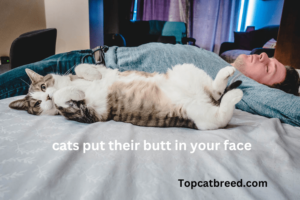Cats often have some puzzling habits, and you might have wondered. one of habit is cat yowling after eating “Why does my cat yowling after eating. It can be quite perplexing, both for you and for them.” It can be confusing for both you and your canine partner.” But don’t panic, we’re here to explain why your cat might be yowling after your pet.
What it manure enjoyable for your cat and less noisy for you. Let’s explore why your cat may be yowling after eating and how to make things better. for your cat. These after-dinner yowls can be a bit strange, but there’s usually a good reason behind them. By learning more about this behavior, you can make mealtimes more enjoyable for your cat and less noisy for you. Let’s explore why your cat may be yowling after eating and how to make things better.
What Is a Yowl?
A yowl, in the world of feline communication, is akin to a loud, drawn-out cry. It’s more intense than a typical meow and can vary from a sharp, high-pitched noise to a prolonged, haunting sound. Cats employ yowling to convey their emotions, desires, or concerns. This vocalization is incredibly versatile and can serve as a call for attention, an expression of frustration, or even a sign of discomfort. Understanding the nuances of your cat’s yowling can help you respond effectively to their needs and enhance your feline-human communication
Why Does a Cat Yowl?
Cats yowl for various reasons, and decoding their yowling can sometimes feel like solving a puzzle. It’s their way of communicating their needs or emotions. Hunger is a common cause; if your cat has finished a meal but still feels hungry, they may yowl for more food. They also yowl to seek attention, express loneliness, or initiate playtime. Sometimes, yowling can be a sign of underlying health issues or discomfort. To respond appropriately, pay attention to the context and frequency of your cat’s yowling, ensuring they lead a content and healthy life.
If your cat yowls after eating? What does this indicate?
“If your cat yowls after eating, it may indicate several things. First, it could be a sign of satisfaction and contentment, expressing her enjoyment of the meal. Conversely, it could signify a craving for more food or a particular treat. Cats have distinct preferences, and yowling might be their method of expressing their likes. Nevertheless, if this conduct is uncommon or continuous, it’s crucial to eliminate any potential health issues. Top of Form Your veterinarian can provide guidance on managing your cat’s post-meal yowling effectively.”
Also Read. Cat growling in sleep? All possible reasons
Satisfaction (or dissatisfaction)
Your cat may be using its mewling as a simple means of communicating how they feel about the food. Did you give them a can of tuna or their favorite cat food? They are most likely ecstatic and wish to congratulate you on a job well done in that scenario. However, cats might take offense if you feed them the same food for two weeks in a row and try to lodge a complaint.
They Want More Food
The most straightforward reason behind a cat’s yowling is often the desire for more food. Even though you might have recently served a meal, your cat may still feel hungry, and they make this known through yowling. Maintaining a regular feeding schedule and ensuring they receive the right amount of food is crucial. Overfeeding can lead to obesity, while underfeeding can leave your cat unsatisfied and vocal about it. Finding the right balance is key to managing this form of yowling.
They Want Attention
Cats are social beings, and sometimes, yowling is their way of seeking attention. They may yowl to express loneliness, boredom, or simply to initiate playtime. Spending quality time with your cat, offering toys and engaging in interactive activities can help reduce attention-seeking yowling. It’s a reminder that your feline friend values your companionship, and meeting their social needs can create a stronger bond between you and a quieter, happier home.
They Are Not Feeling Well
Yowling can also be an indicator of your cat’s health. If your cat’s yowling is unusual, persistent, or accompanied by other concerning signs, it’s crucial to consult your veterinarian. Underlying medical issues, such as pain, discomfort, or illness, could be the cause. In such cases, yowling serves as a distress signal, prompting you to take action. Regular veterinary check-ups and attentive monitoring of your cat’s behavior can help detect health issues early and ensure your feline companion enjoys a healthy, comfortable life.
They’re Confused
Confusion in cats can manifest through yowling. Your feline friend might vocalize when faced with a new environment, unfamiliar people, or changes in their routine. Understanding their confusion and providing a sense of security and stability can lead to their satisfaction. Addressing the source of confusion, whether through familiar surroundings or patient introductions, can help ease their distress.
She’s in Heat
When a female cat is in heat, she may yowl to attract male cats. This vocalization serves as a way of signaling her readiness to mate. It’s a natural part of a cat’s reproductive cycle. While this yowling might be bothersome to you, it’s essential to consider spaying your cat to prevent heat cycles and reduce this behavior, ensuring a more peaceful coexistence for both you and your feline friend.
How to Manage Her Yowling?
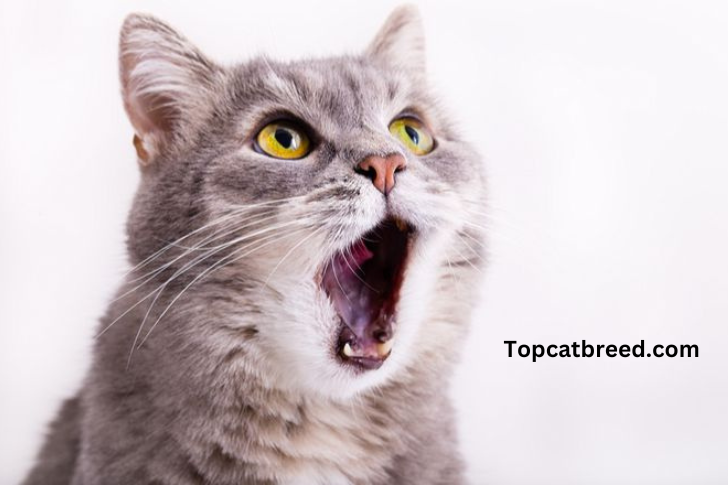
Managing your cat’s yowling can lead to a happier and more harmonious home. Start by identifying the cause of her vocalization, whether it’s hunger, attention-seeking, or a health concern. If it’s related to attention or play, engage in interactive activities and spend quality time with her. Ensure she has a consistent feeding schedule to prevent excessive yowling due to hunger. In cases of persistent or unusual yowling, consult your veterinarian to address any underlying health issues and provide the necessary care for her well-being.
1. Investigate Potential Health Issues
Before addressing behavioral aspects, it’s essential to rule out any underlying health concerns. Cats may vocalize after eating if they’re experiencing dental problems, digestive issues, or discomfort. A visit to the veterinarian can help identify and treat any health issues, ensuring your cat’s overall well-being.
2. Adjust Feeding Routine and Portions
Cats can be quite particular about their food, and yowling may indicate dissatisfaction with their meals. Experiment with different cat food brands or flavors to find one that your feline friend enjoys. Additionally, consider adjusting feeding portions and frequency, as overeating or hunger could contribute to post-meal yowling. Consult your veterinarian to determine the optimal feeding schedule and portion size for your cat’s specific needs.
3. Create a Calm Feeding Environment
Cats are sensitive to their surroundings, and a stressful environment can lead to post-meal yowling. Ensure that your cat’s feeding area is quiet, free from disturbances, and away from her litter box. Creating a peaceful feeding environment can contribute to a more relaxed dining experience for your cat.
By addressing these key aspects, you can effectively manage your cat’s post-meal yowling and promote a healthier, happier feline companion.cat yowling after eating
FAQS
1-Why does my cat howl after he eats?
Cats may howl after eating due to various reasons like pain, attention-seeking, or a medical issue. Consult your vet to rule out health concerns.
2-Why has my cat started yowling so much?
Excessive yowling could signal stress, illness, or mating behavior. Identify the cause through observation and seek vet advice for a solution.
3-Why is my cat meowing even though she ate?
Persistent meowing after eating might indicate dissatisfaction, boredom, or an underlying health issue. Monitor behavior and consult a vet if needed.
4-How do I get my cat to stop meowing?
Address the root cause by providing enrichment, ensuring a comfortable environment, and consulting a vet. Avoid punishment and focus on positive reinforcement.
